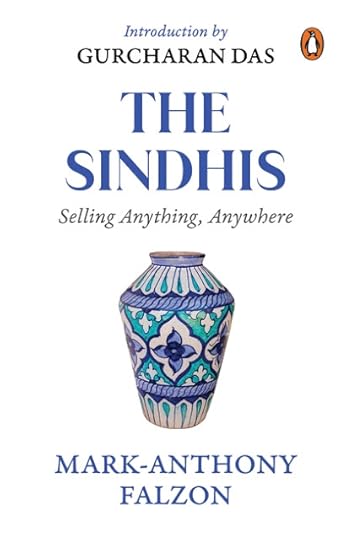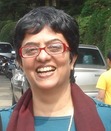Interview: Mark-Anthony Falzon, author, The Sindhis; Selling Anything, Anywhere

By Saaz Aggarwal
How did you manage all this research during lockdown?
My first and most intensive period offieldwork was in 1999-2000, in London, Malta and Mumbai. I was at the Gatewayof India for the millennium celebrations, and remember watching the firstsunrise of the third millennium at the lakeside in Borivali. I have since beento India six more times, and the results of that work are contained in myscholarly writing. I also draw on them in this book, though SellingAnything, Anywhere is not aimed at the academic reader. I did intend tospend some months updating my notes in India in 2020-1, but had to resort toZoom. There was also a fair bit of desk research, which was unaffected byCovid.
2. Was it really the Sindhibusinessman Bhojoomal and his sons who founded Karachi?
If the memoirs of Seth Naomul Hotchand areanything to go by, then yes. Hotchand was a merchant who lived in Karachi inthe nineteenth century, and who wrote the history of his family. He wrote thathis ancestor Seth Bhojoomal (who originally hailed from Sehwan in Sindh)settled and established business in Kharrakbandar around 1720. The place,however, quickly silted up, and Seth Bhojoomal and his fellow Sindhi merchantsrelocated to a new place, later named Karachi, and developed it into a port ofconsiderable prominence.
3. Claude Markovitspublished his findings about the Sindhi global traders in 1999. Why did it takeso long for this centuries-old phenomenon, well known among the Sindhisthemselves and the local populations where they live, to be identified andwritten about?
The Sindhworki network goes back to the1850s, and involved traders from Hyderabad-Sindh who travelled quite literallyaround the world in search of potential markets (usually in port cities,especially in the earlier phase). That of the Shikarpuris goes back to at leastthe early eighteenth century, and involved men from Shikarpur who ran anelaborate banking trade in Central Asia. You’re right in saying that it tookscholars a long time to get the hint. Some early examples were Anita Chugani’s1995 MA thesis on Sindhworkis in Japan, my undergraduate thesis on Sindhworkisin Malta in 1996, Markovits’ benchmark book of 2000, and my book of 2005. Ithink the reason is that Sindhis are so adaptable and flexible in their ways,that they are easily overlooked as generic ‘Indians’. It took Markovitsconsiderable detective work to tease out the Shikarpuri presence in CentralAsia; and Sindhworkis can be even more difficult to identify as such. For alltheir globetrotting and business acumen, Sindhis tend to fly under theradar.
4. Why are there no womenin your book? There’s a brief indication of them as secret agents, and laterthe ones to prepare ‘poppadums’ and pickles which the men hawked. What aboutthe many who had the gene and the connections and used them, the entrepreneursand the captains of industry?
I do mention that in some contexts Sindhiwomen are increasingly directly involved in business, and that women played akey role in the circulation of information – crucial to business success – backin Shikarpur and Hyderabad, and that well-connected Sindhi women in India andelsewhere play an important part in the making of networks. Still, I think yourobservation is justified. Mine is a partial story that leaves room for manymore. Some have already been told by Rita Kothari, Subhadra Anand and yourself,and there’s a new breed of scholars (some are Sindhi women – TrishaLalchandani, Radhika Chakraborty and others) who are researching doctorates onvarious aspects of Sindhis, and there's Aruna Madnani’s ‘Doorway to Sindh’webinar series for her Sindhi Culture Foundation.
5. “Poppadums”? Seriously Mark?
It’s papad I had in mind – not least sinceI must have consumed hundreds in the course of my fieldwork. Sindhis can begood hosts. You’re quite right to say papad is iconic. In part that’s becauseof their unique peppery taste and blistered appearance (they always remind meof Neapolitan pizza dough). But as I mention in the book, the making andselling of papads and pickles is a defining episode in the story of how manySindhi refugees survived, and overcame, the economic hardships of Partition.
6. Why does your book notmention the Sindhi tradition of philanthropy? And why do you have mostly onlystories of plodders and small-time dealmakers - yes, the bell-curve people –but no representative of the huge population of rags-to-riches and the "mymother's blessings took me to where I am" people, who would have loved tobe mentioned by name?
This book does not cover every aspect ofSindhi business and culture. It was prescriptively intended as a short andreadable text, aimed at a popular audience. Besides, I cannot claim to haveworked with a mathematically representative sample of Sindhis. That's also whythis interview is welcome: it complements the contents.
Many Sindhis are in fact involved inphilanthropy. In the case of some of the big Sindhworki and other firms, thiscan be as prominent as full-scale hospitals. But I’ve met people of more modestmeans who funded and ran small homeopathic clinics, for example, in India andelsewhere. I think the point really is that, contrary to some of the more toxicstereotypes, Sindhis do not form isolated moneymaking enclaves; rather, theyare embedded in the societies they live in in various ways that include philanthropicgiving. Seth Naomul writes that on one auspicious occasion in 1805, hisancestors spent “large sums of money in charity and in feeding Brahmins andfakirs, and acquired such renown on account of their liberality that Bhats andBrahmans chanted their benevolence in songs especially composed”.
7. Did you observe culturaldifferences between the solidly Sindhi communities in Panama, Hong Kong, theCanaries (and other locations) through local influences?
You’ve put your finger on one of the mostfascinating parts of the Sindhi story. Simply put, Sindhis live in places.
The very first Sindhi I interviewed ran aretail business in Malta which had been in the family for many decades. In acorner of the shop was a little shelf, and on it photos of departed familymembers and figures of Ganesha, Lakshmi and the Virgin Mary. When I asked, hetold me he was ‘100% Hindu’ but also a follower of a number of Catholicdevotions.
In Indonesia today there are about 10,000Sindhis; many are businesspeople involved in many different lines. Perhaps thebest known is the production of sinetron (soap operas), which they have beenheavily invested in since the 1980s. The Sindhi producers even came up with aninnovative product, sinetron Ramadhan, which in turn evolved into a new genreof Indonesian television known as sinetron Islam (Islamic soap opera). Theseare two small examples of their linguistic, cultural, economic and social diversity.And yet, Sindhis retain a strong sense of a networked cultural affinity, whichmakes it possible for them to relocate should they wish or need to.
8. Priya Ramani sent me anindignant message about the title of this book and I realised that it could beseen as demeaning to the community. I told her I’d ask you.
There’s the joke about the Sindhi on themoon who approached Neil Armstrong and tried to sell him a flag – old andweary, but telling. Everywhere you look you will find pockets of Sindhisselling things as diverse as souvenirs, textiles, electronics and carpets;financing films and developing real estate; manufacturing industrial plasticsin West Africa and snack foods in Ulhasnagar, making bespoke suits in Hong Kongand running restaurants and hotels in dozens of locations worldwide. SellingAnything, Anywhere is my homage to a tremendous lifeforce of adventure andenterprise.
Published on 11 November 2022 in Hindustan Times
https://www.hindustantimes.com/books/...



